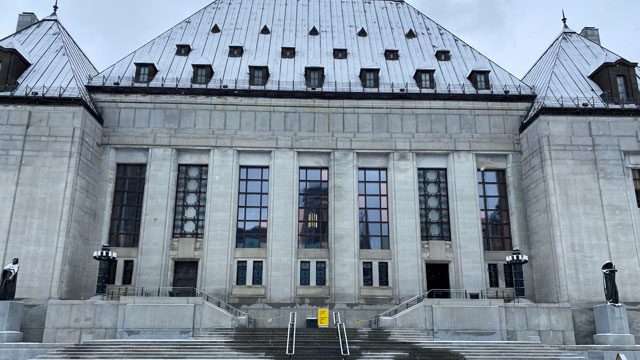

Brett Forester
APTN News
Canada’s Supreme Court sided with Ontario Friday on who bears responsibility for remediating a mercury waste disposal site on Ontario’s Wabigoon and English rivers.
The contamination damaged the health and livelihood of multiple generations on Grassy Narrows and Islington First Nations downstream.
In a written decision, the court concluded Resolute FP Inc. and Weyerhaeuser Company Limited, previous owners of the site, have to comply with 2011 directorial order from the Ontario Ministry of the Environment to “repair the waste disposal site, keep monitoring and testing, and take steps to prevent and deal with leaks.”
This means, the companies will have to begin paying for this process.
The mercury disposal site was built in 1971 to contain waste that was previously dumped straight into the river. Ontario allowed the site’s owner at the time, Bowater (that eventually became Resolute after filing for bankruptcy) to abandon the site in 2011. Bowater previously acquired the mill and the waste disposal site from Weyerhaeuser.
The case revolves around the scope of an indemnity granted by Ontario to the mill’s owners in 1985 after the Grassy Narrows litigation. It defines an indemnity as a kind of financial protection against future liabilities.
Ontario agreed to indemnify the mill’s previous and future owners against any further third-party lawsuits relating to mercury pollution in the rivers. But Weyerhaeuser and Resolute argued the Ontario government’s remediation order should have been covered by the indemnity.
Today’s judgement ends a series of legal appeals. The companies appealed the order in 2013, but the Ontario Court of Appeal sided with the government on December 20, 2017.
The court’s decision noted that, in 2011, environmental certifiers believed the site had 35 years left in its “contamination lifespan.”
It is unclear whom, if anyone, has been monitoring, testing, and maintaining the mercury disposal site since then.
A majority of judges decided that the 1985 indemnity only applied to third-party legal claims, such as the ones brought forward by Grassy Narrows.
Indemnity agreement
Ontario, however, was a first party to the indemnity agreement. The judges concluded the site’s previous owners were not protected from financial costs associated with complying with governmental environmental regulations.
It is unclear if this case sets any environmental precedent, or will impact similar cases of pollution in the future, as it depended upon technical legal arguments around the wording of the indemnity contract.
Nevertheless, it is a win for the Ontario Ministry of the Environment impacted by this issue.
The judgement comes a day after the end of the AFN Special Chiefs Assembly, where Grassy Narrows’s Chief Rudy Turtle addressed attendees and held a meeting behind closed doors with federal Minister of Indigenous Services Marc Miller.
Turtle criticized government for its “paternalistic approach,” reminding the administration of the immediate and ongoing need for action.
“Now that the Supreme Court has ruled, the stalling must end on the cleanup of that mill site. I remain deeply concerned that the investigation into mercury contamination around the Dryden mill has been at a standstill for the past year,” said Turtle in a release.
“Ontario and Domtar must allow trusted experts to find the buried barrels of mercury and investigate contaminated soil and groundwater at the mill site immediately. We live downstream from that mill and we need answers about the mercury that is still there. Stop playing hot potato and clean it up.”
Seth Kursman, global and corporate spokesperson at Resolute, told APTN through email that Resolute is “disappointed” with the court’s decision.
But said Resolute is not giving up its legal battle.
Kursman pointed out that the Supreme Court case deals with the issue of the 1985 indemnity. Resolute, he said, will challenge the legality of the Ontario Ministry of the Environment’s 2011 remediation order.
“At this juncture, Resolute will continue it’s [sic] monitoring and the posting of financial assurance, while the appeal of the Director’s Order proceeds to the Ontario Environmental Review Tribunal (ERT). Considering it is under review by the ERT, we cannot say more at this juncture.”









